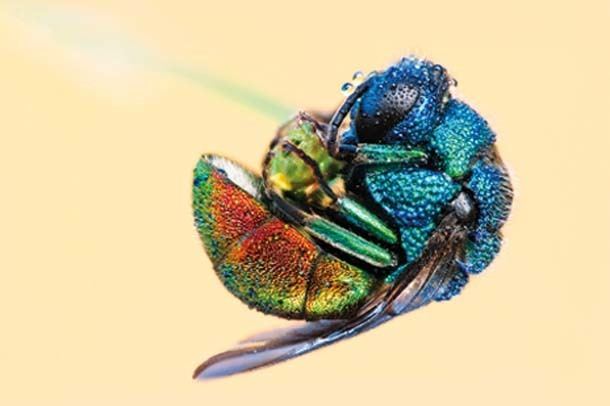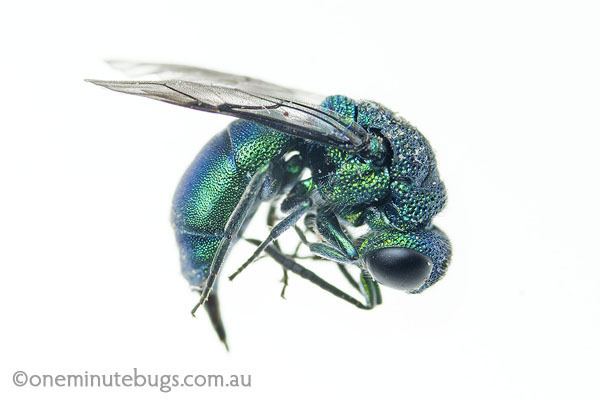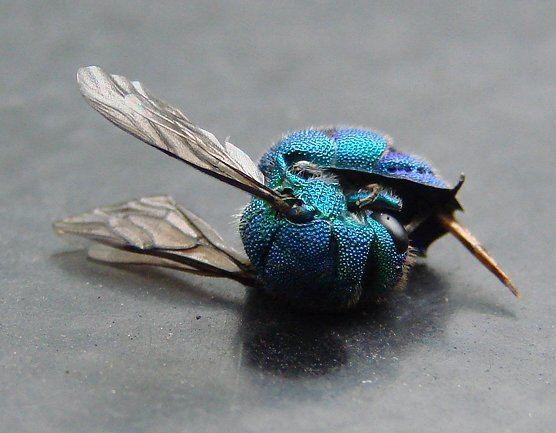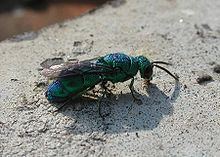Higher classification Chrysidoidea | Suborder Apocrita Scientific name Chrysididae Rank Family | |
 | ||
Similar Chrysis, Insect, Hymenopterans, Sphecidae, Spider wasp | ||
Bee wolf wasp v s cuckoo wasp slow motion test corel video studio x5
Commonly known as cuckoo wasps or emerald wasps, the hymenopteran family Chrysididae is a very large cosmopolitan group (over 3000 described species) of parasitoid or kleptoparasitic wasps, often highly sculptured, with brilliant metallic colors created by structural coloration. They are most diverse in desert regions of the world, as they are typically associated with solitary bee and wasp species, which are also most diverse in such areas.
Contents
- Bee wolf wasp v s cuckoo wasp slow motion test corel video studio x5
- Carpenter bee building nest cuckoo wasp sabotaging it
- Nomenclature
- Ecology and behavior
- References

Carpenter bee building nest cuckoo wasp sabotaging it
Nomenclature
The term "cuckoo wasp" refers to the cuckoo-like way in which wasps in the family lay eggs in the nests of unrelated host species.

Chrysididae, the scientific name of the family, refers to their shiny bodies and is derived from Greek chrysis, chrysid-, "gold vessel, gold-embroidered dress", plus the familial suffix -idae. The common names of many species pay similar tribute to their appearance: jewel wasp, gold wasp, emerald wasp, ruby wasp and so on (cf. French guêpe de feu, fire-wasp, and German Goldwespe, gold-wasp).
Ecology and behavior

Members of the largest subfamily, Chrysidinae, are the most familiar; they are generally kleptoparasites, laying their eggs in host nests, where their larvae consume the host egg or larva while it is still young, then the food provided by the host for its own juvenile. Chrysidines are distinguished from the members of other subfamilies in that most have flattened or concave lower abdomens and can curl into a defensive ball when attacked by a potential host, in the manner of a pill bug. Members of the other subfamilies are parasitoids, of either sawflies or walking sticks, cannot fold up into a ball.

Chrysidids are always solitary, and are closely associated with other solitary wasps. They fly mainly in the hottest and driest months of summer, preferring subtropical and Mediterranean climates. They favor dry areas and sandy soils; each species is confined to a narrow type of microhabitat where adults may rest or find hosts to parasitize, for example on bare soil or on dead wood where other solitary wasps have their nest holes. Some species visit flowers such as of the Umbelliferae, Compositae and Euphorbiae.
